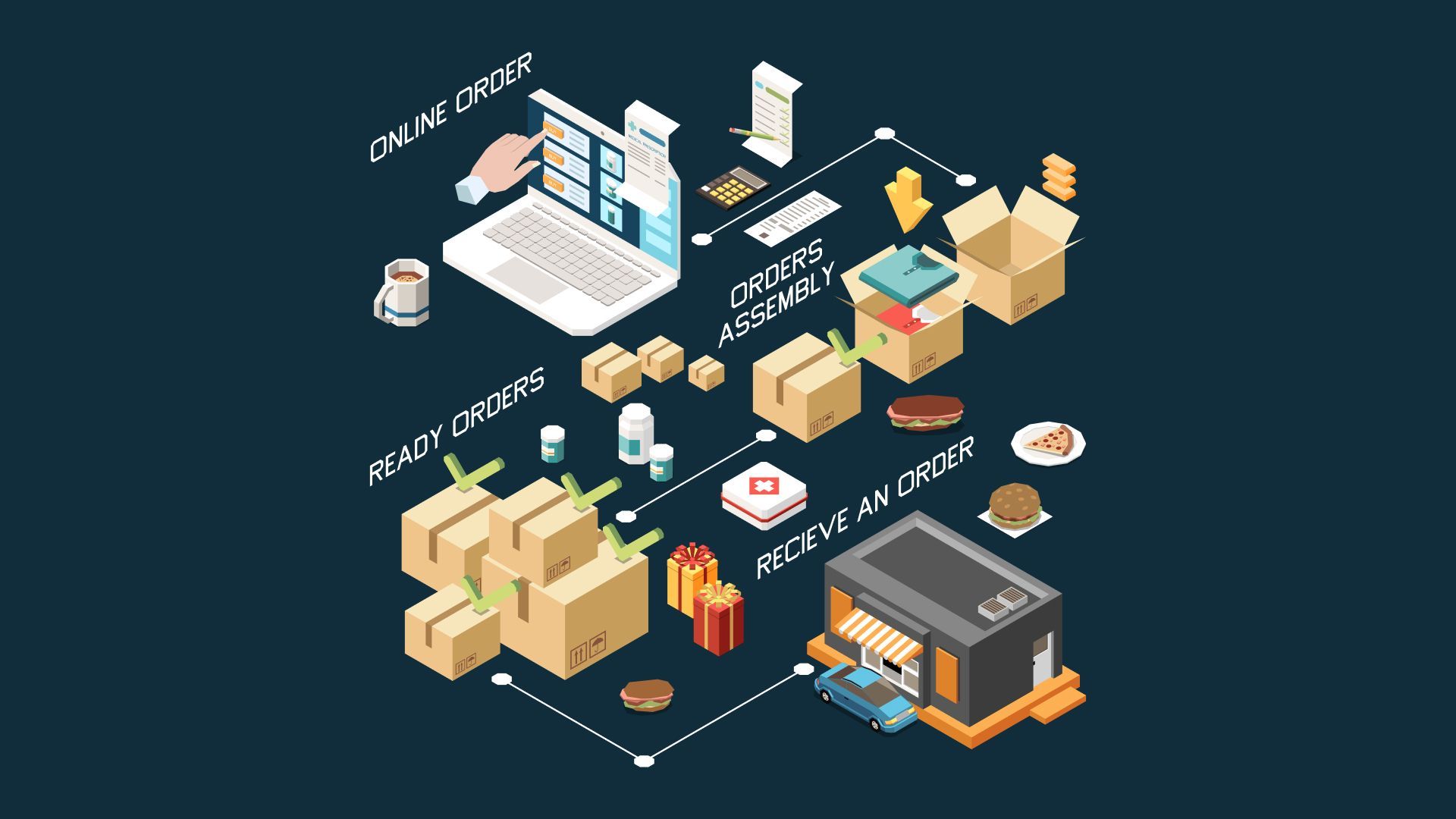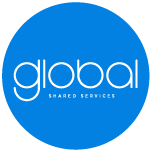Restaurant Forecasting Methods, Tools, and Best Practices

Every restaurant owner knows the drill: food costs go up, margins get thinner, and customers are unpredictable. Operators who lack a disciplined restaurant forecasting process often react too late to cash flow surprises, labor overruns, or inventory waste that erode profitability. Most budgets collapse because of unrealistic projections, poor accountability, or a lack of buy-in from the team.
Accurate restaurant forecasting replaces guesswork with actionable data, giving you control over sales projections, labor scheduling, and purchasing decisions. Using proven forecasting formulas and industry benchmarks, restaurant leaders can transform raw numbers into clear financial plans. The right process turns uncertainty into opportunity and sets your business up for growth, resilience, and consistent profit.
Smart forecasting means you stop guessing and start using real numbers to plan your sales, schedule staff, and order supplies.
What Is Restaurant Forecasting?
Restaurant forecasting helps operators predict what's coming for their business. Will Fleming, President at Global Shared Services, explains, “Companies that aren’t good at budgets aren’t good at predicting the future. If you’re not good at predicting the future, the business can sometimes be an accident.” Instead of relying on guesswork, forecasting uses real data to guide sales, cost, and staffing decisions, enabling operators to make informed choices about their business operations.
Key Types of Restaurant Forecasting
- Sales forecasting predicts weekly or daily revenue by analyzing historical sales, local events, and trends.
- Demand forecasting estimates guest counts and menu item popularity, helping operators prepare for peak periods or seasonal swings.
- Operational forecasting maps out labor schedules, food orders, and cash flow requirements, so costs stay in line with goals. It also supports effective inventory management by ensuring stock levels align with predicted demand, helping to reduce waste and optimize profitability.
Why Forecasting Matters
The goals are simple: predict your revenue, keep labor and food costs in check, and make the most of what you have. Restaurant forecasting supports cash flow management, helps with budgeting and turnaround plans, and keeps teams accountable to realistic targets. Accurate forecasting also enhances financial planning by providing clearer insights into future revenues and expenses, enabling better long-term financial management.
This is crucial as 82% of restaurant business failures are attributed to poor cash flow management or lack of understanding of cash flow dynamics. No matter your restaurant’s size, forecasting is essential for preparing for seasonality, reducing surprises, and building a more resilient operation ready to grow.
Cash Flow, Labor, and Inventory Management
Good forecasting helps you staff properly—no more expensive overtime or people standing around with nothing to do. You can schedule labor efficiently, order only what you need, and avoid waste from over-purchasing. Accurate forecasting also helps you manage inventory by aligning stock levels with projected sales and inventory projections, reducing waste and preventing shortages.
For every dollar invested in improved inventorying and ordering practices, restaurants can achieve cost savings of approximately seven dollars. Forecasting helps you keep food and labor costs where they should be—well within industry standards.
With a disciplined process, you identify trends early, spot cash flow gaps, and adjust before problems grow. Regular review of forecast versus actuals drives accountability and continuous improvement among your managers.
Fast Adaptation and Smarter Decisions
When market conditions shift or a local event impacts sales, proactive forecasting lets you pivot quickly. You can recast your budget, reset targets, and make data-driven decisions that protect your bottom line. Incorporating competitive analysis and accurate forecasting enables restaurant operators to make more informed decisions about pricing, menu offerings, and resource allocation. As Will Fleming explains, “If you have a good process and get good at forecasting, you’re going to know what you need to do to get to those results. If you don’t, the business result will be unintentional - sometimes good or sometimes bad .”
Core Elements of Effective Restaurant Forecasting

In restaurants, one bad week can sink your month. While other businesses can think monthly, restaurant owners need to watch their numbers every week. A successful restaurant forecasting process builds discipline and transparency, so teams spot issues early and take action before small problems become major setbacks. Informed planning, based on accurate forecasts, allows restaurants to proactively prepare for upcoming challenges and opportunities.
Why Weekly Cycles Matter
Weekly forecasting allows for quick course corrections. Defining the appropriate time period for forecasts—such as days, weeks, or months—is essential for making accurate predictions and timely operational decisions. Payroll, food orders, and rent payments often hit at different times throughout the month, which can create cash crunches if not planned for in advance. Reviewing cash flow weekly helps you see patterns, identify cash shortfalls, and respond faster to payroll or vendor obligations.
Key Metrics and the 13-Week Cash Flow
To build real financial control, track these core metrics every week:
- Sales by day, week, and menu category
- Labor cost percentage relative to sales
- Cost of goods sold (COGS) for food and beverage
- Rent and fixed occupancy costs
The 13-week cash flow model gives a rolling view of your upcoming obligations, helping you avoid surprises and builds trust with banks and investors. Budgeting and recasting your plan as conditions change keeps your forecasts rooted in reality. Regularly reviewing forecast data enables operators to adjust strategies and maintain financial control as business conditions evolve. The combination of weekly discipline, real data, and team accountability forms the foundation of effective restaurant forecasting.
Step-by-Step Guide: Building Your Restaurant Forecast
Effective restaurant forecasting starts with a structured process that gives operators control over sales, labor, and cash flow. Effective forecasting is a cornerstone of successful business strategies, enabling restaurants to anticipate challenges and capitalize on opportunities. Use this step-by-step approach to create a forecast that drives real results and helps your team stay accountable.
Gather and Analyze Historical Sales Data
The foundation of any accurate forecast is reliable historical data. Collect at least one year of sales, labor, and cost information from your POS and accounting systems. Analyzing historical sales data and past sales is crucial for identifying seasonal trends, which can help inform future forecasts and improve operational planning. Break down data by week, daypart, and location if you run multiple units. Look for patterns in guest traffic, sales spikes around holidays, and slow periods. Identify how seasonality, local events, or menu changes impact your financial performance.
Build a 13-Week Cash Flow Forecast
Restaurants run on a weekly rhythm. A 13-week cash flow model is the industry standard for tracking and projecting short-term financial health. Open a new spreadsheet and list each week as a column. Input projected sales using your historical averages and adjust for upcoming events or promotions.
Creating future forecasts and estimating future sales helps restaurants plan for sales fluctuations and resource needs. Enter fixed expenses such as rent, utilities, and loan payments on the appropriate weeks. Add variable costs like labor, food, beverage, and supplies, matching their actual payment cycles.
Factor in Labor, Food, and Fixed Costs
Include every major expense—hourly and salaried labor, food and beverage costs, marketing, insurance, and maintenance. Use realistic labor percentages based on recent trends, not wishful thinking. Developing accurate forecasts requires making sound business assumptions based on historical data and market trends. Cross-check your food cost percentage against industry benchmarks. Build in a buffer for unexpected costs or supply chain disruptions.
Set Actionable Budgets and Use Rolling Forecasts
Work with your managers to set budgets that reflect what your team can actually achieve. Avoid top-down targets nobody believes in. Use the most recent months’ data to set a baseline, then adjust as conditions change. Update your forecasts weekly, not yearly. Maintaining accurate forecasts enables restaurants to respond quickly to changes and optimize performance. A rolling forecast lets you catch problems and seize opportunities before they hit your bottom line.
Review, Adjust, and Communicate
Share your forecasts and results with your team every week. Celebrate wins and analyze misses together. When forecasting becomes a shared habit, your restaurant moves from constant firefighting to proactive growth and lasting profitability. This proactive approach also contributes to higher customer satisfaction by ensuring consistent service and quality. This discipline gives operators clarity, confidence, and control.
Practical Forecasting Formulas and Tools
Restaurant operators face real consequences when forecasts miss the mark, from costly labor overruns to inventory waste that eats into profit. The right forecasting formulas and tools help you build a plan rooted in the realities of your restaurant’s sales cycles, seasonality, and cost structure. Using a reliable forecasting tool streamlines data analysis and improves the accuracy of your projections.\
Essential Forecasting Formulas
Start with a simple sales forecast formula: Projected Sales = Average Sales per Day x Number of Days in Period x Expected Variance. Adjust for seasonality or major events to stay accurate. For labor, multiply projected sales by your target labor percentage to set realistic payroll budgets. Labor Cost Forecast = Projected Sales x Target Labor Percentage. Calculate inventory needs by forecasting sales down to menu mix and portion size, then dividing by vendor pack size.
- Inventory Need = (Forecasted Sales x Menu Mix x Portion Size) / Vendor Pack Size
Analyzing the average spend per customer allows operators to accurately predict sales, leading to a more accurate prediction of inventory and staffing needs.
Recommended Tools and Templates
Many operators use spreadsheet templates for forecasting, such as restaurant sales forecast Excel templates or Google Sheets. Restaurant-specific software like Restaurant365, Toast, and Upserve ties forecasts directly to your POS, automates data pulls, and provides real-time updates. Specialized software can further enhance forecasting accuracy by integrating multiple data sources and automating complex calculations. These platforms help track actual sales, labor, and inventory against your projections, making it easier to spot trends and catch issues before they threaten margins.
Free downloadable templates and cloud-based dashboards empower your team to review, revise, and collaborate on forecasts. Regular use of these tools ensures your numbers reflect reality, not wishful thinking. With proven formulas and the right technology, you can bring structure, accountability, and confidence to your restaurant forecasting process.
Overcoming Common Forecasting Challenges
Restaurant operators often face roadblocks when building a culture of forecasting. Leadership buy-in sets the tone. Without it, budgets and projections lack credibility, and teams revert to reactive habits. To create real accountability, tie incentives to forecast accuracy and show managers how their input shapes targets. Restaurant managers play a crucial role in implementing and maintaining effective forecasting practices, ensuring that data-driven insights are used to optimize inventory, staffing, kitchen prep, and menu planning.
Building Buy-In and Accountability
Start with clear communication. Involve operations leaders and store managers early in the budgeting and forecasting process. Make targets transparent and achievable by using recent sales and labor data, not just top-down goals. Reward managers for meeting labor cost percentage and food cost percentage targets.
When seasonality or economic swings disrupt your plans, do not ignore the variance. Recast your forecasts and budgets quickly. Keep your team engaged by sharing new projections and discussing the reasons behind any changes.
A collaborative and data-driven forecasting process enables restaurateurs to make better decisions and drive business growth.
Making Forecasts Reflect Operations
A forecast only works if it matches what is happening on the ground. Aligning forecasts with restaurant operations ensures that staffing, inventory, and service levels meet actual demand. Align numbers with real schedules, inventory orders, and actual guest counts. Use rolling four-week forecasts to spot trends and catch problems early.
As Will Fleming put it, “If we get everybody on a baseline and try to work from there, and we make it simple and clear. Anybody willing to work hard and whose business has hope, working with us is only going to help them.” A collaborative approach turns forecasting into a tool for growth.
Mistakes to Avoid and Best Practices for Restaurant Forecasting
Every restaurant feels the pain when forecasting fails. Overestimating sales, ignoring seasonality, and relying on outdated data can throw cash flow and labor costs into chaos. Recognizing predictable trends, such as holidays and seasonal fluctuations, is essential for accurate forecasting. Many operators also set budgets without buy-in from operations, leading to frustration and poor accountability.
Common Pitfalls
- Overestimating sales or ignoring major cost drivers
- Failing to account for seasonal swings, local events, or slower periods—it's important to plan for times of reduced customer traffic to optimize staffing, inventory, and operational costs
- Missing or outdated data in your forecasting models
- Building budgets without input from key managers
- Skipping regular review of actuals versus projections
Best Practices for Success
- Review and update forecasts weekly to catch issues early
- Use four-week rolling forecasts and compare against actuals
- Keep data organized and accessible for your team
- Engage managers at every step to build true accountability
- Recast budgets quickly if targets no longer fit real conditions
Following these best practices enables restaurant operators to make more informed financial decisions and improve long-term business outcomes.
Continuous improvement and collaboration keep your forecasts relevant. When you involve your team and use real data, forecasting becomes a tool for growth and resilience, not just another task on your plate.
Making Forecasting a Habit for Lasting Profitability
Restaurant operators who forecast every week build real financial discipline. Embedding forecasting into your weekly routine helps you control labor percentage, prime cost, and cash flow before issues appear. Consistency matters more than perfection—small, steady improvements add up. Share results with managers, encourage team buy-in, and review actuals versus projections together.
Adjust quickly when you see trends shift or your plan misses the mark. Collaboration and transparency create a culture where everyone owns the numbers and their outcomes. As Will Fleming says, “if you forecast every week, you know what is possible and how to get there.” Make forecasting part of your weekly routine. It's one of the best ways to build a restaurant that actually makes money and keeps making money.
About Global Shared Services: Restaurant Financial Expertise

Restaurant operators navigate rising food costs, labor pressures, and unpredictable sales each week. Global Shared Services (GSS) stands out as a partner with deep restaurant expertise and a team-based approach to financial management. Restaurant owners benefit from GSS's tailored forecasting and financial solutions, which help improve decision-making in areas like inventory management, staffing, and operational efficiency. GSS delivers forecasting, budgeting, and cash flow solutions built for franchises, QSRs, and independents.
Operators get hands-on help with the stuff that matters most—from building a 13-week cash flow to fixing budget gaps and staying compliant. GSS works side by side with your team, providing actionable insights and clear financial reports that empower better decisions.
Restaurant success depends on proactive financial discipline and collaboration. Ready to strengthen your results? Contact GSS to access specialized, affordable guidance that positions your business for confident, profitable growth.
Frequently Asked Questions About Restaurant Forecasting
What is restaurant forecasting and why does it matter?
Restaurant forecasting uses sales data, labor trends, and current market conditions to predict future revenue, costs, and needs. Accurate forecasting helps restaurants anticipate customer expectations and meet customer expectations by ensuring the right staffing, inventory, and service levels that customers expect. Operators rely on forecasting to manage cash flow, control labor, and reduce food waste, all of which protect profit margins in a volatile industry.
How do I build an accurate restaurant forecast?
Start with historical data. Using reliable data and proven methods leads to more accurate sales forecasts and accurate prediction of future revenue. Build a rolling forecast, such as a 13-week cash flow model, that includes projected sales, labor, food cost, and fixed expenses. Update your forecast each week as new information comes in to ensure you can accurately forecast sales and make informed decisions. Involve your managers to improve accuracy and buy-in.
What formulas and tools work best for restaurant forecasting?
Use a sales forecast formula based on average daily sales, labor cost percentage, and menu mix analysis. Effective sales forecasts and forecasting tools are essential for forecasting restaurant sales and optimizing business performance. POS systems and accounting software provide the most reliable data sources. Restaurant-specific spreadsheet templates and platforms like Restaurant365 streamline the process.
How does forecasting help with staffing and inventory?
Accurate forecasting lets you schedule the right staff, order the right inventory, and avoid overstaffing or waste. By considering employee availability and focusing on inventory management, you can ensure that service quality remains high even during fluctuating demand. This proactive approach improves profitability and keeps your operation nimble.
Where can I find templates or examples?
Free and paid restaurant sales forecast Excel templates are available online. Effective forecasting relies on market research, understanding market trends, customer preferences, and customer behavior, as well as considering external factors that impact sales and overall sales. Templates can be adapted for a new restaurant and new restaurants without historical data, as well as for existing restaurants with established patterns. Forecasting should also account for takeout customers, menu planning, and customer traffic to ensure comprehensive and actionable projections. Restaurant finance experts can provide tailored examples or case studies for your concept.
Share this post
Insights






